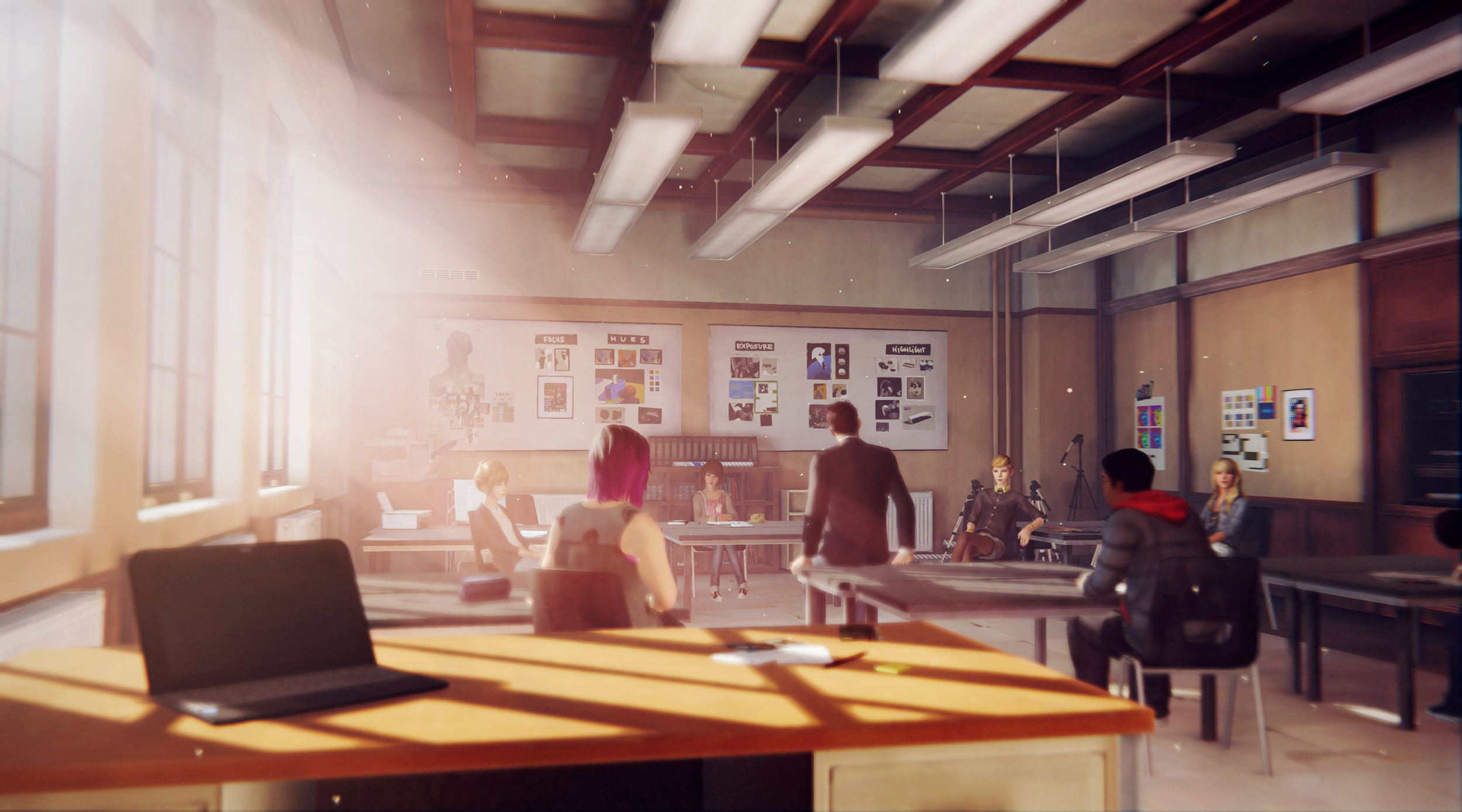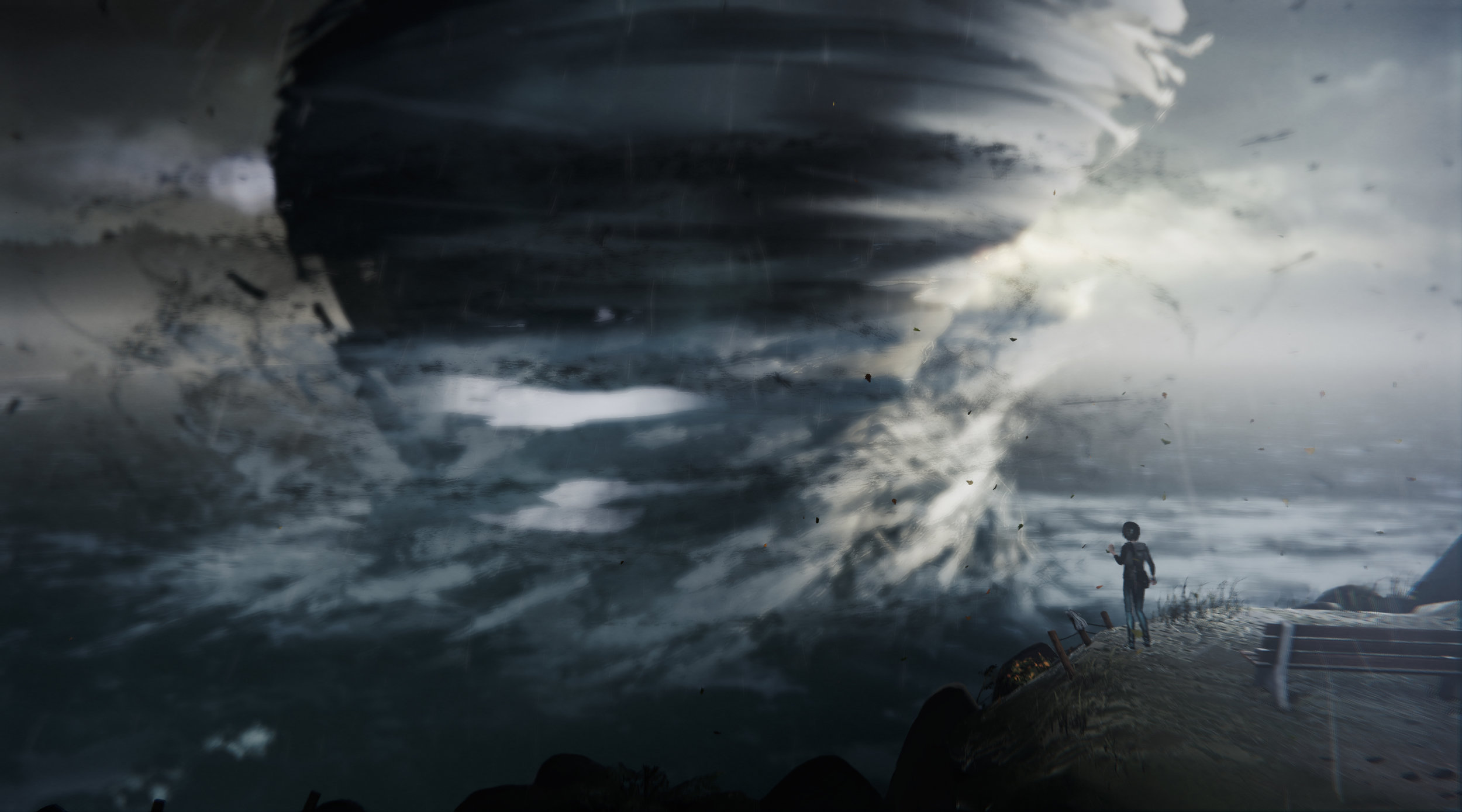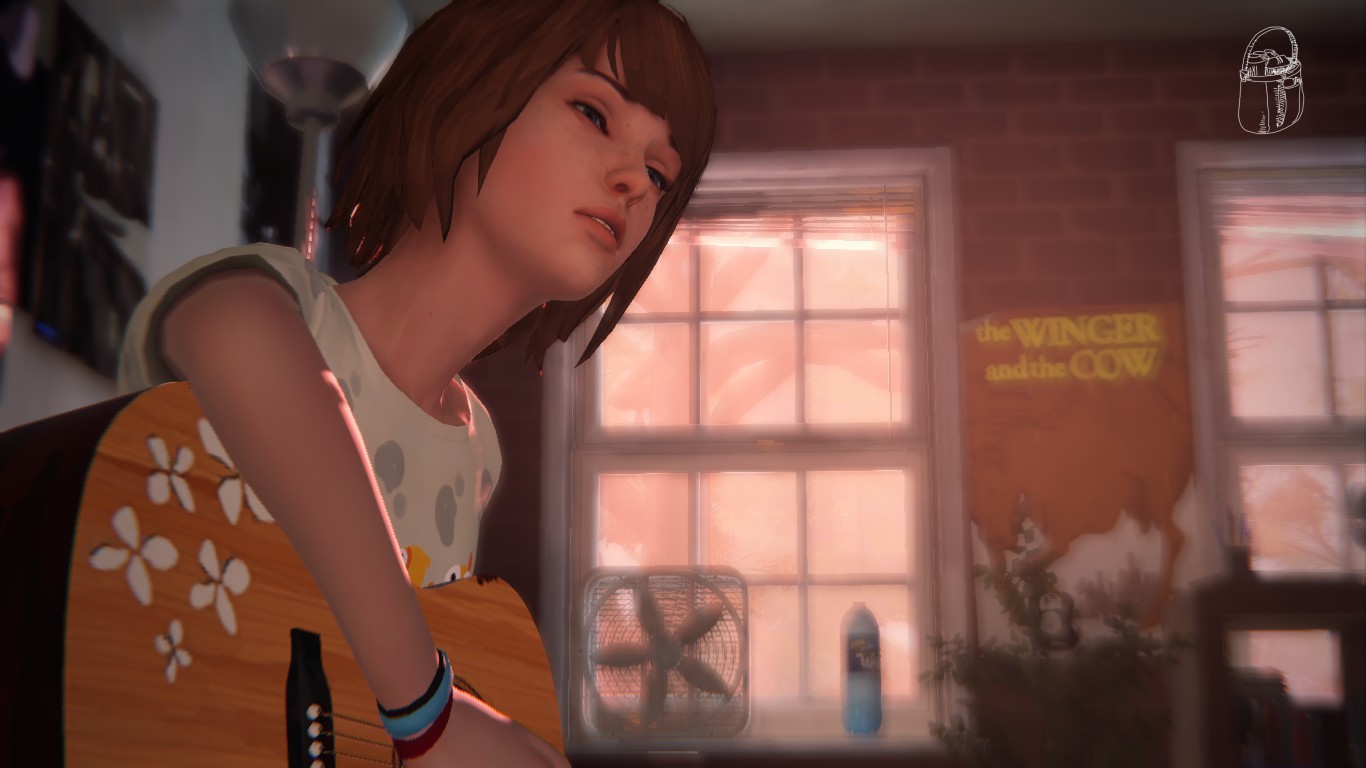Life is Strange - Review
Playing Life is Strange, it felt like I was looking at a hazy photograph of myself. It follows Max, a nervous, geeky teenager with a love of photography and obscure alternative bands, with big plans for her life but no idea how to achieve them in a world that feels simultaneously overwhelming and incredibly small in her remote hometown. She’s her highschool’s weirdo, tumbling through life trying to do her best and avoid the asshats that seem to wait around every corner. She is, so much that it almost felt creepy, a digital recreation of the person I was and in a lot of ways still am (though certainly a cuter one). This is the most I’ve ever felt like my character in a game was “me”, and that makes for a powerful tool for sparking empathy in a story as personal and scarily relatable as Max’s.
But Max is also her own person, not just a shell for me to live out a virtual life in. Reading over diary entries, snooping at her texts, watching how she interacts with the people around her, she doesn’t feel like a character, but a human being. I might be able to shape the path she takes, but there was never a pretense that I’m actually in control here, and though that might sound like a bad thing in a video game it works amazingly at creating the same feeling of being powerless in the face of people that seem so above you that Max feels as she struggles to make it out of Blackwell Academy alive.
Highschool is an inherently terrible time, and that’s captured in the people around Max who would seem like diluted cliches if they weren’t drawn from the same people you probably had to put up with too. The rich snobs, douchebag jocks, elitist science nerds, and general air of animosity is highschool in a nutshell, drawn in a way that’s far less glamorous of cartoonishly absurd as we so often see in media. It’s just highschool, bland and full of petty dramatic; an environment I recognize and want as much as Max to get away from.
If that sounds like a strange recommendation, it’s because it really is a bit hard to say full heartedly that this is a life I want to go through again. I can relate to Max, but that doesn’t mean I’m any more thrilled about dealing with her idiotic compatriots as they try their hardest to be absolutely despicable. But, that also feels like something that has to exist for Life is Strange to work, and a big reason it feels so real to me. Life just really sucks sometimes, and you have to push through that to find the things and people that make it worth living.
In Max’s case that person is Chloe, a childhood friend left behind when she moved out of her hometown, now caught up in her own mess. She’s Max’s antithesis; rebellious, outspoken, willing to do anything and think of the consequences later if it means getting out of the hole she’s been left in. Her and Max are all but entirely opposites, and yet able to understand and help each other. It’s not a cheesy kinship, or necessarily an easy one; it feels natural and human, something you have to work at but you can’t imagine losing. As of its first episode, Life is Strange is mostly about the relationship between these two people ostracized from society (though for very different reasons) trying to find their way in a world that seems larger than life. And maybe it’s because I could see myself so clearly in these characters, but that worked for me, and was enough to make me want to stick with these characters.
But that’s not the only story developer Dontnod wants to tell here, and the other is where they begin to slip up a little, though also where they have the most chance to take the game in limitless directions. See, Max can rewind time, and already she’s had to use it to save someone from being killed (as well as herself). She doesn’t know how she can do it, but now she’s having premonitions, watching the world repeat again and again, and feeling like a lunatic with no way to explain what’s happening. It sounds like the crux of the narrative, and maybe it will be in coming episodes, but where Life is Strange so far really screws up is immediately making Max’s power feel small and ordinary.
Though initially shocked, Max immediately understands how to rewind time, and is entirely unconcerned with using it for even the most mundane tasks. Dontnod has taken something that should be terrifying and impossible to comprehend, and made it just another mechanic to use, which feels more out of place than ever in a world that’s otherwise starkly realistic. It’s also a mechanic that’s used fairly poorly, with puzzles that feel like poor excuses for the mechanic’s existence and causing the choices you make to be fairly unimpactful. Being able see an outcome and then decide if you want to rewind time and change it removes the tension and permanence of the decisions you make, and is something I’m not sure how Dontnod is going to be able to fix the way it’s currently implemented.
As of now Life is Strange definitely feels like a developer still not entirely sure how to make the game they want to, but it’s a game that also has just as much potential to become something really special if they can break out of the mindset of the more traditional games they’ve made in the past. In a sense, they’re a lot like Max as well. A social misfit among their peers, trying to do their own thing while finding it hard to break out of the current they’ve been caught in, and capable of amazing things if only they can find the voice to channel their passion.
Episode 2: Out of Time - Update
Fall is in the air. The leaves are falling. The world is still moving, and Max along with it. It’s been months since Life is Strange’s first episode introduced us to its oddball protagonist, but only a day has passed when me meet her again in the season’s second entry. Yet, something has undoubtedly changed.
Though the calendar says otherwise, there’s the unshakable feeling of space between the events of episode one and two, and it’s a space that leads into the troubles Dontnod has fallen into in deciding what direction to take their game. The sense of indecision in “Out of Time” makes it hard to dissect. There are sparks of brilliance within it, yet a glaring amount of wasted time and unfocused direction.
Every time travel related problem from the first episode remains unaddressed, but here there’s a very clear dividing line between what works and burdensome fluff. Half of the episode is devoted to Max proving the existence of her powers to Chloe, and its a sequence of increasingly pointless events that seem to have been inserted for the express goal of reminding you you’re playing a video game. The authenticity of the world is destroyed as you answer banal quizzes and go on fetch quests. Dontnod has yet to find a purpose for Max’s powers, and has used most of “Out of Time” to as if to continue hiding that fact to give them more time of their own to figure things out.
This leaves the second episode feeling strung out and half baked, filling a space of time but using it poorly. Interactions with characters become less believable as your choices from the first episode and their effects are elaborately described and brought up. There are fewer key characters in episode two, yet it somehow spends less time developing them, causing me to begin to see through their quickly dissolving authenticity.
But then there are the moments that say something powerful. That go places I didn’t think a game would be prepared to, with restraint and purpose aware of the delicate nature of the subjects being discussed. Watching a student deal with harassment and the aftermath of sexual exploitation and attempting to provide support in a situation which seems uncontainable, I became appalled and at a loss for what I should do. That this should coincide with the ongoing hatred of gamergate makes it feel even more important, showing if only just barely the insurmountable weight and hopelessness of being placed in the spotlight to be scorned and ridiculed, and how that can so completely alter someone’s life and push them to take terrifying action.
All the same, it’s that Life is Strange goes to these sorts of places in the same breath as trying to spin a sci-fi plot that continues to feel like a third wheel to a teen drama, that makes “Out of Time” almost disgusting. Even in its most human and vulnerable moments, Life is Strange is unwilling to commit to its narrative and discard its mechanical shackles, causing every line to read as false and exploitative. It uses a character’s suffering to touch on sensitive topics, but then neglects it only to revisit it in the episode’s closing moments in a way that left me feeling sick. If it wasn’t for how the episode had played out beforehand, the framing of an immensely troubling scene might have been completely different, but now I’m caught unsure of how I feel about anything I’ve seen. All I know for certain is Dontnod is taking a lot of risks to tell the story they want to, and I have increasingly little faith they have the ability to tell it right.
Episode 3: Chaos Theory - Update
Episode two of Life is Strange ended catastrophically, and entering episode three, it’s clear Dontnod and the characters they’ve created haven’t forgotten. The tone is noticeably subdued and disquieting, with the walls between characters having been broken down as they all share in the shock of what has happened. In these opening moments, it felt like Life is Strange had finally found the direction it wanted to head in, following characters we don’t often see and being willing to go to dark places to tell a story that’s emotionally resonate.
But it takes only a moment longer to be reminded that despite being halfway over, Life is Strange is still as lost as ever. Its problems this time aren’t as overt as before, but that they’re still present this late in makes them more concerning than ever. For the first half of the episode I was bombarded with tedious mechanical conceits, sending me rummaging through drawers for items, interrogating people for answers to trivial questions, and all the while being entirely confused as to what the point of it all is.
For the first two episodes of Life is Strange I’ve tried to stay hesitantly optimistic. I could see the beginnings of something special attempting to come together, and hoped despite early blunders that the series would even out later on. But this is episode three of five and it still feels like the game is spinning its wheels.
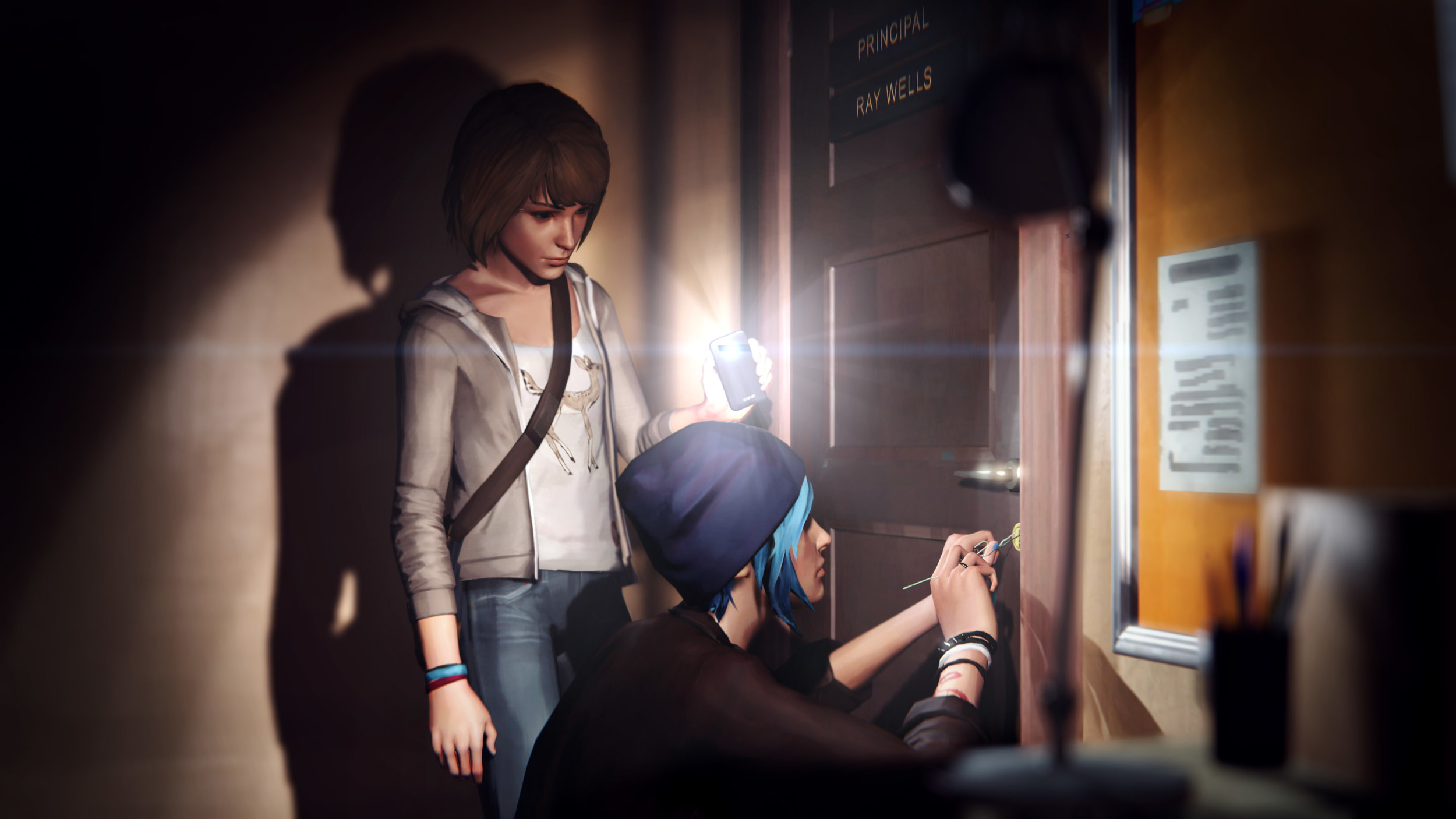
The characters I previously related to now seem to be but catalysts for self-indulgent scenes that feel out-of-place and out of character. Life is Strange wants to at once be exceedingly dramatic but also care free and light. Its cast may be reaching out for a shoulder to cry on one moment and then easily casting aside their worries the next, so quickly and without feeling that I can’t help but begin to question their authenticity.
And that kills me because I want so much for these characters to succeed, both as people within their own narrative, and as the strong female leads games are in dire need for. When it’s not lost in a confused direction, the relationship between Max and Chloe is both incredibly poignant, and something that’s entirely unseen in games. It’s a meaningful, fully developed relationship that is almost single-handedly pulling Life is Strange through its weaker moments and making it difficult for me to give up the hope that this will all fall into place eventually.
How the episode ends though is making it hard to keep lying to myself. Episode three continues to demonstrate that Life is Strange knows how to create gravitas and create a compelling lead in to the next episode, but at the same time it’s trying to pull the same trick twice only dressed differently. So much of the episode feels wasted or incoherent until its final moments which come suddenly and create drastic future consequences, but I don’t know how long Dontnod can keep it up.
When everything in Life is Strange seems to be but another way for it to hurt its characters, it starts to feel like the game has become exploitative. There are amazing moments in episode three, but they’re scattered and disconnected, and then it all ends feeling much the same as the last episode. Only I’ve seen this before, and what once had me clutching my chest now has me wondering if this is all the game ever had, and all I should expect going forward.
Episode 4: Dark Room - Update
It’s always an immensely odd experience for me anytime I attempt to arrange my thoughts on the current state of Life is Strange. Though it is, objectively speaking, a singular game with a linear development pipeline, the way in which it has constantly and dramatically evolved from episode to episode has made nailing down a static opinion of it entirely impossible. So it’s with a great apprehension and hesitancy that I approach each new episode, so completely unsure where it may take me or even quite what I want from it at this point in time.
For so long I’ve been so unsure of what Life is Strange is that I’ve been unable to even begin to determine what I want it to be and how well it has managed to live up to that. My expectations have risen and fallen with such erraticism that by episode four I was actively attempting to throw out any preconceived notions about what I was getting myself into in the hopes that I’d come away less disappointed, or preferably be utterly blown away.
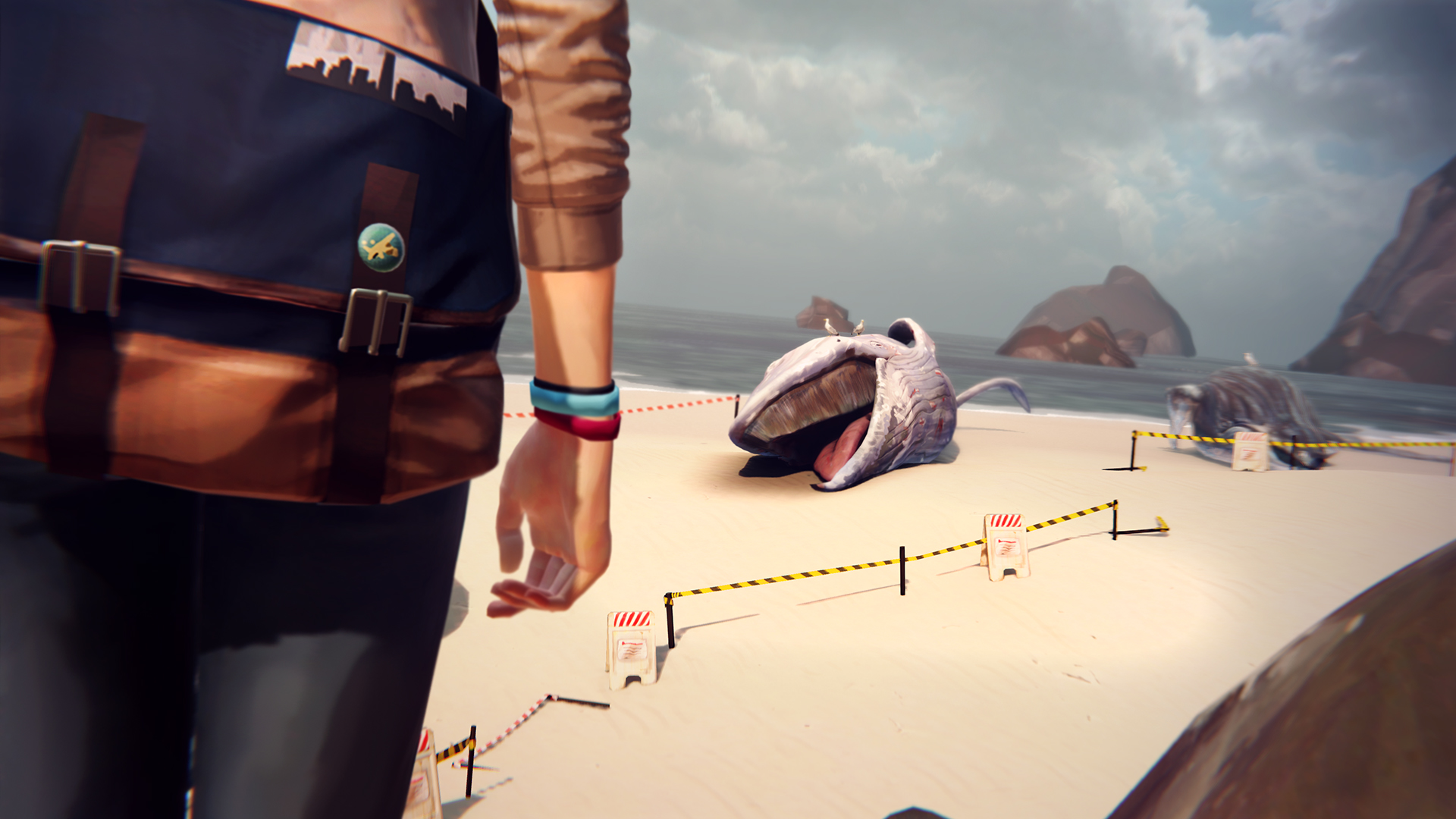
With its second to last episode, it feels as if all my worries about the trajectory Life is Strange seemed to have been heading have been written off and resolved. It’s easy to say that I had simply given up on Dontnod, but a more accurate statement would be they have grown a great deal as a studio since Life is Strange began and we are now seeing the full of what they had envisioned their quirky, inexplicable creation to be.
I will be the first to say that I didn’t believe them capable of telling the story they wanted to. Past episodes had been so uneven and inscrutable that I had become agitated at the sheer inconsistency of it all. I don’t know if episode four was always intended to be the centerpiece of Life is Strange’s vast web of plotlines, but its significance extends far beyond itself and serves to tie the series together and bring it into focus the way it has struggled to from episode one.
It isn’t even the disturbing and shocking moments that impressed me the most during episode four. Rather, I was in awe at the control and restraint with which Dontnod handled scenes of intense emotion and desperation. At this point all hope of a happy ending has been ripped away from Max and Chloe, leaving them clinging to each other for support in a world literally unraveling around them. More than any prior episode, Dark Room recognizes that there is power in restraint and not telling the player how they are meant to feel. Before the opening credits had finished rolling I already had tears in my eyes, even as I struggled to say why.
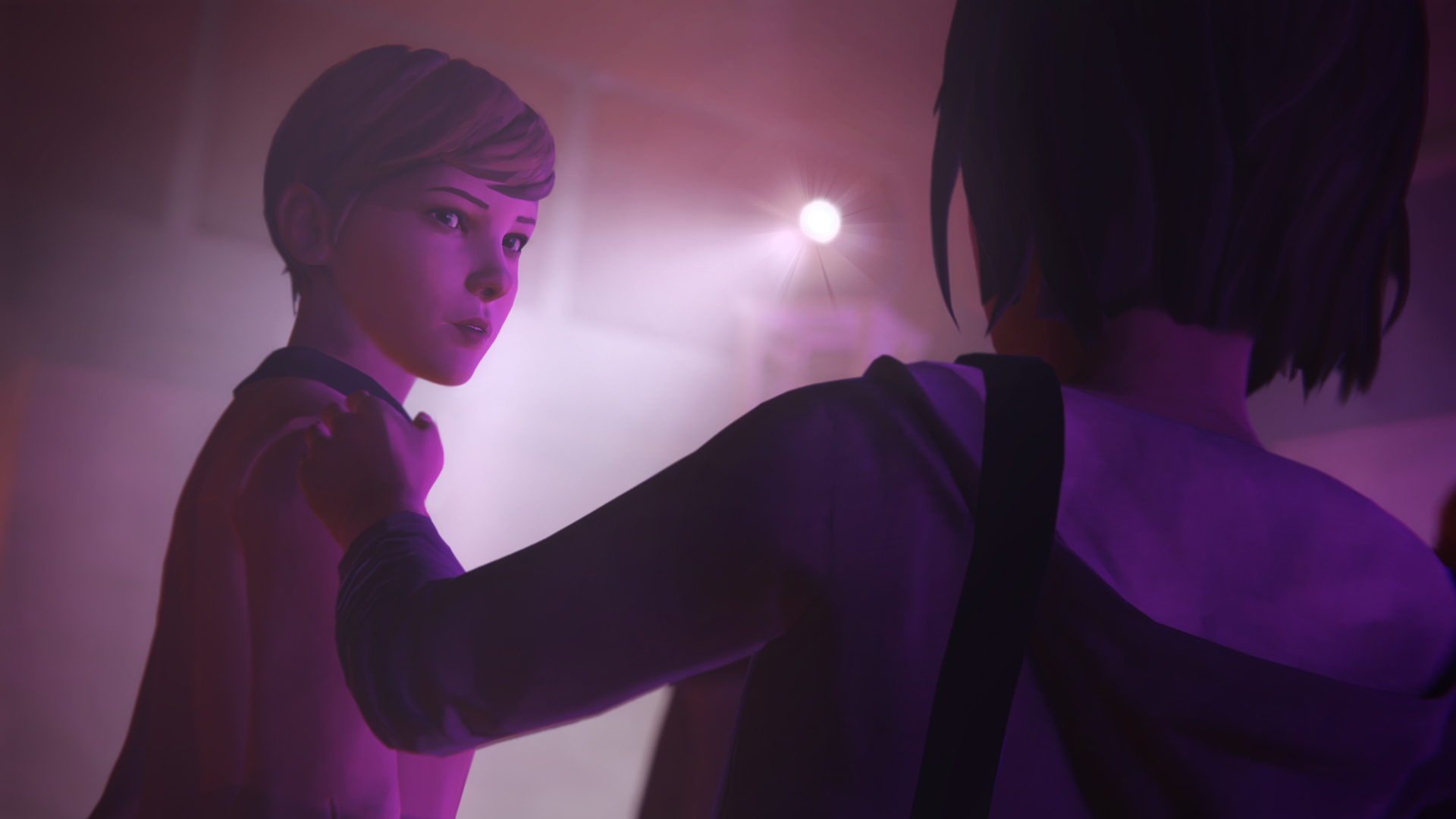
With episode four, Life is Strange finally caught sight of itself and the reckless path it has been forging. It then began again, slowly, deliberately, and with a newfound respect and recognition for the horrific and affecting subject matter it has chosen to delve into.
I can say with absolute certainty that whatever episode five of Life is Strange may be, it will be nothing like what I imagine it to be at this point in time. Neither will it likely be what I want it to be, but I think I’m coming to see that that’s OK. That for however uncertain I am with where this story is headed, sometimes it’s best to wait and see before losing hope in something that has consistently transfigured itself with each new chapter. I’m glad I stuck around long enough to see what it has become, and it’s with a renewed confidence that I look to the future and how all of this will come to an end.
Episode 5: Polarized - Update and Final Thoughts
With so much left at stake, so many loose strings to tie up, and innumerous questions left unanswered, it’s hard to believe Life is Strange has already reached its fifth and final episode. More so than likely any other episodic game in recent memory, Life is Strange has seemed to reinvent and push itself with each successive episode, creating new problems with each accomplishment as it stumbled along attempting to find direction. In terms of fixing the issues I’ve had from the start of Max’s journey, which have only grown and mutated as the series has progressed, episode five accomplishes effectively nothing. It double downs on many of the worst elements of the game and often seems stretched to the breaking point in its attempts to conclude a game which feels as if it’s barely had time to begin.
But for all its faults, for all the things that have vexed and frustrated and at times legitimately angered throughout the course of the series, I can’t abandon Life is Strange. Its earnestness and refusal to ever refrain from pushing itself even beyond its own capability makes it so unequivocally endearing that I continue to root for it even as I attempt to recognize the fact that it is finished and nothing will change from here on out. This review itself has then become a lesson in internal agony, as I’m filled with contradictions with each sentence typed and opinion left unresolved.
What is impossible to overstate in regards to episode 5, are the sheer lengths it goes to in order to arrive at the most tired and unsurprising ending which could possibly be found. The logical hoops and continuity errors which have piled up by the episodes conclusion are painful to attempt to resolve, which makes it all the more exasperating to have them eventually arrive exactly where you expect. The journey is often more interesting than the destination, but in this case the journey is often as confusing and unfulfilling as where we’re left at.
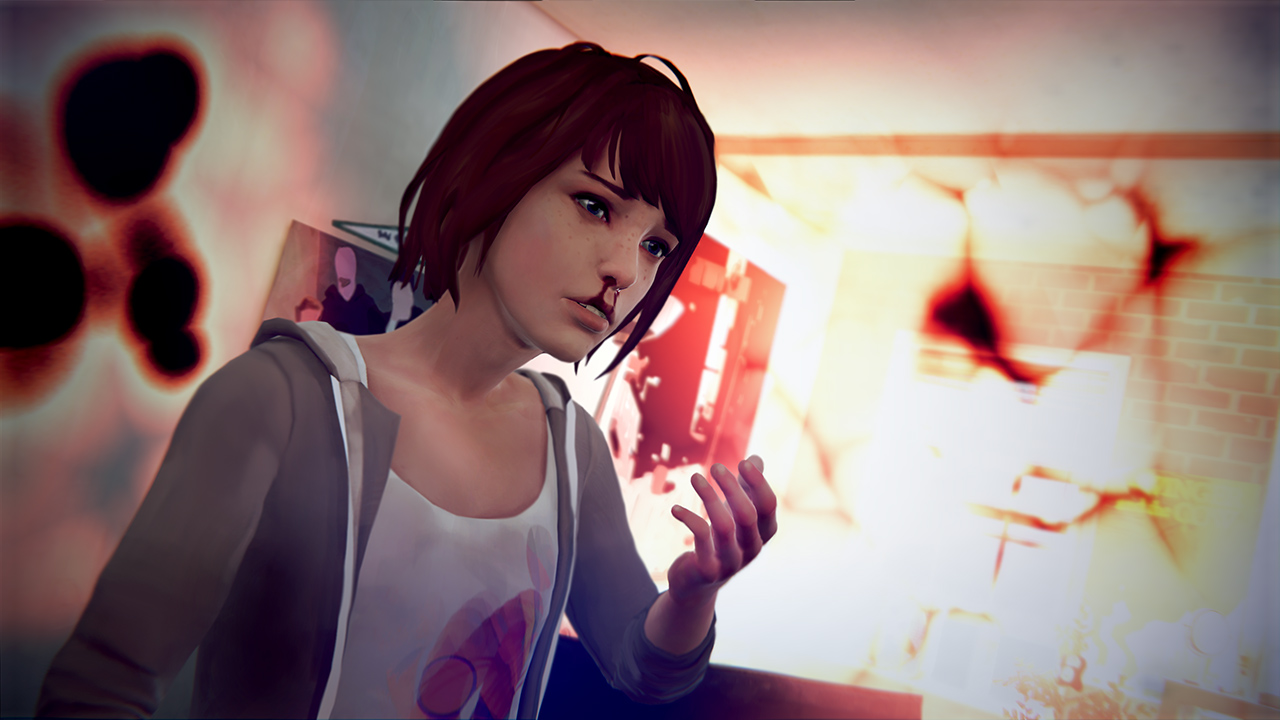
There is also the unmistakable cruelty with which Life is Strange chooses to treat its cast within the final entry in their fictional lives. I say this not due to the abhorrent nature of much of what occurs within this episode, but because of the gratuitous voyeurism which often accompanies it. A particular scene in which Max is tortured is especially gross, essentially existing for no reason but to prove just how depraved her capture truly is (a fact which had already been extensively detailed through the violence afflicted to so many other young women). In a game which has so often seemed to take strides to handle difficult and troubling subject matter with care, it’s disappointing to see Life is Strange so disgustingly present one of its most uncomfortable moments. It’s one thing to present torture for what it is, it’s another to turn it into a drawn out and meaningless scene in which we are forced to watch a man abuse a helpless young woman as he recounts his other victims and what he plans to do to Max.
It’s impossible to say how this eventually resolves without spoilers, but it was perhaps the most frustrating moment for me in a game which was already stressing the limits of my acceptance. What transpires from that moment forward however presents the most dramatic tonal shift in the entire game. Shallow characters become emotional and sympathetic, the consequences of what has happened are finally realized, and there is a palpable tension driving the final hour which had been sorely missing.
Episode 5 also serves to finally prove that Life is Strange was never about time travel, or murders, or high school drama. It’s was always the story of a friendship between two young women trying to find their place in the world. It’s a story that often became plagued by the constraints of the genre it chose to be told in, but that a story like this even exists in a game is worthy of commendation.
Final Word
There are so few narratives in this medium that even approach what Life is Strange manages on so many levels, that even if it had to happen within a game which often couldn’t decide what it considered important, what it accomplishes despite all its flaws should speak for just how much this game matters, and how important it is to experience for yourself.


